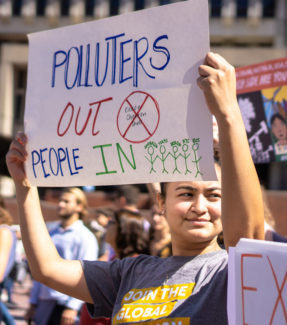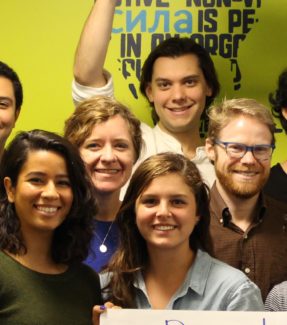Power mapping is a helpful exercise to learn more about a decision-maker, decipher who has influence over them, and identify ways to engage with those people to ultimately move them to support a resolution or policy. The core idea is to identify who has the decision-making power for your school board, teachers union, PTA, etc., and figure out how you can reach them effectively.
How to power map
- Identify your key institutional influencer: the person who has the power to make the decision that will win your campaign.
- For a resolution to stop McTeacher’s Nights, this will likely be a leader (or leaders) of your town or state’s teachers union, the local PTA, the board of education, or other decision-making body in your education system.
- Research who has influence over your institutional decision-maker. Be a creative researcher. Think about the constituencies this person is accountable to. For elected officials, look for their donors, committees they serve on, other appointments they hold, their past voting records, political endorsers, institutions, media outlets that the decision-maker reads, family, organizations that also work in education, etc.
- To learn more about their network and influencers: Check OpenSecrets.org, LittleSis.org, and their LinkedIn.
- To learn more about the issues they focus on and groups they work with: Check social media accounts (Facebook, Twitter), local news coverage, and official union/PTA/school board website.
- Evaluate those people/organizations based on how influential they are and how much of a priority they are to your influencer.
- Who on your list are most influential to your influencer?
- Who are likely to be with us and who likely against us? Who or what groups are the most influential to them?
- Decide who to organize from your list above, considering who’s most influential and who you have access to.
- Also consider: Who could we gain access to and move to be on our side? (If you aren’t sure, be bold! You may be surprised who says yes.)
- Finally, develop your campaign strategies and tactics. Create these based on who you need to move, the best avenues for influence, and your ability to accomplish them. Sample tactics include:
- Get 20 phone calls and emails into your decision-maker’s office from concerned parents, students, teachers, and their other supporters.
- Build a coalition of groups (like parent or student organizations) most influential to your decision-maker and create a joint public letter.
- Garner media visibility for the campaign through letters to the editor and other opinion/editorial pieces in local papers authored by influential people, if your decision-maker is concerned about their public image.
- Hold a few delegation meetings between your decision-maker and representatives from groups that endorsed and support them.
- Coordinate a social media campaign tagging your identified decision-maker and asking them to support the resolution.
- Something(s) else!
You can also brainstorm with a few friends or members of your circle to determine the best tactics and get other perspectives. And of course, we’re always ready to support you.



